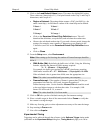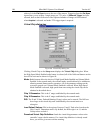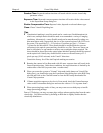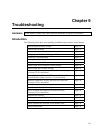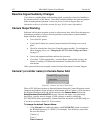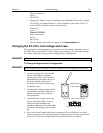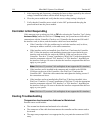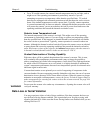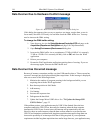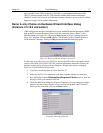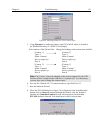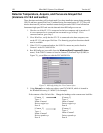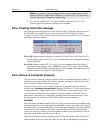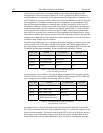
Chapter 9 Troubleshooting 115
• For a TE-cooled camera, the camera's internal temperature may be too high, such as
might occur if the operating environment is particularly warm or if you are
attempting to operate at a temperature colder than the specified limit. TE-cooled
detectors are equipped with a thermal-protection switch that shuts the cooler circuits
down if the internal temperature exceeds a preset limit. Typically, camera operation
is restored automatically in about ten minutes. Although the thermo-protection switch
will protect the camera, you are nevertheless advised to power down and correct the
operating conditions that caused the thermal-overload to occur.
Detector loses Temperature Lock
The internal temperature of the camera is too high. This might occur if the operating
environment is particularly warm or if you are trying to operate at a temperature colder
than the specified limit. If this happens, an internal thermal overload switch will disable
the cooler circuits to protect them. Typically, camera operation is restored in about ten
minutes. Although the thermal overload switch will protect the camera, users are advised
to power down and correct the operating conditions that caused the thermal overload to
occur. With some versions of the software, the indicated temperature when the camera is
in thermal overload (thermal switch is in the cut-out state) is -120° C.
Gradual Deterioration of Cooling Capability
With time, there will be a gradual deterioration of the camera’s vacuum. This, in turn,
will eventually affect temperature performance and it may no longer be possible to
achieve temperature lock at the lowest temperatures. In the kind of low-light applications
for which cooled CCD detectors are so well suited, it is highly desirable to maintain the
system’s temperature performance because lower temperatures provide less thermal noise
and better signal-to-noise ratio.
Vacuum deterioration occurs primarily as a result of outgassing of components in the
vacuum
chamber. Because outgassing normally diminishes with time, the rate of vacuum
deterioration in new detectors will be faster than in old ones. When the camera no longer
maintains an acceptable cold temperature, contact the factory Technical Support Dept. to
make arrangements for returning the camera to have the vacuum restored. See page
164
for contact information.
Do not open the vacuum valve under any circum
stances. Opening the vacuum valve will
void your warranty.
WARNING!
Data Loss or Serial Violation
You may experience either or both of these conditions if the host computer has been set
up with Power Saving features enabled. This is particularly true for power saving with
regard to the hard drive. Make sure that Power Saving features are disabled while you are
running WinView/32.



